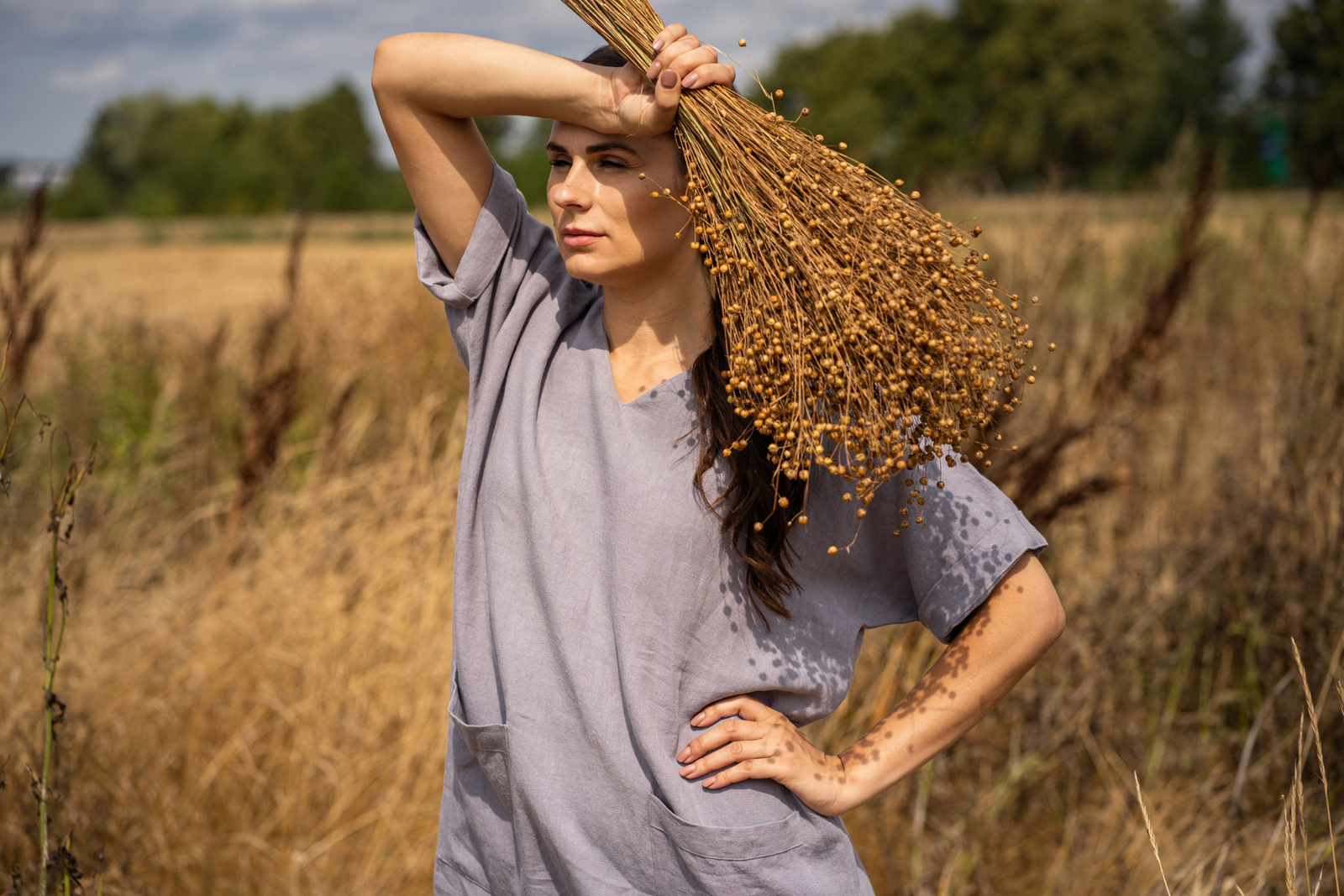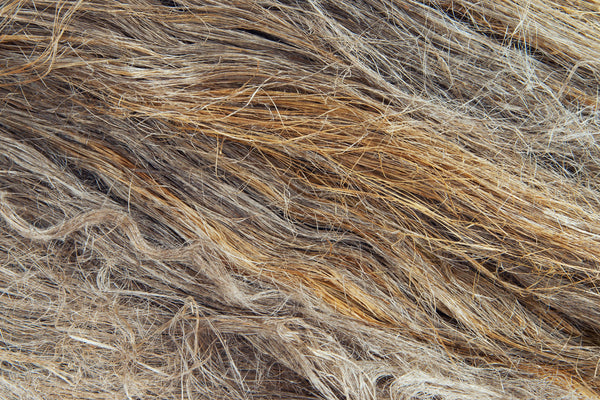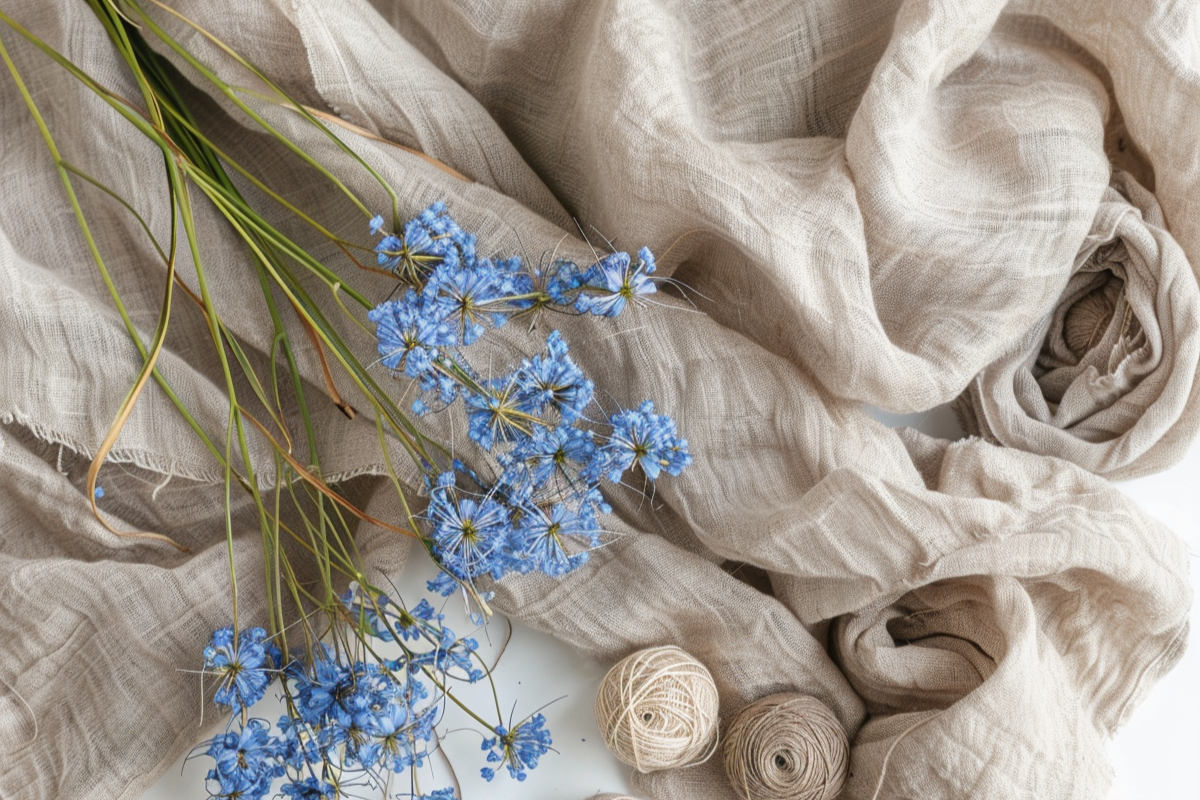
From Flax to Linen Clothing: Long Journey in Short
July 14, 2022 4 min read
Linen – fabric old as time, its flax portrayed in rural movies, mentioned in folklore songs and traditional mythological fairytales told by grandmas. Still, here it is on the contemporary streets and glamorous covers of the magazines, praised and undoubtedly on trend. Linen is something strongly rooted in the past and clearly directed to the future. Have you – the one wearing beautiful linen clothing – ever wondered how these garments are made? How come so that a pale blue flower seen in the fields somewhere along the line becomes fine material for stylish clothes?
Well, since menique is closely acquainted with linen fabrics in order to offer our sophisticated customers unsurpassed quality and comfort, let us take you on a journey from a tiny flax seed to your beloved linen piece of clothing. There are several steps that we can take a peek at to better understand how precious linen textiles are and how lucky those who have chosen to wear it become.
7 steps from a seed to menique
- Cultivating

You might have heard the song ‘The farmer plants the seeds’ and how with the help of the sun and rain this tiny seed begins to grow. The whole process from sowing to harvesting the flax plant takes about 100 days. However, it does not flourish everywhere: flax feels most comfortable in cool, damp climate and fertile soil. Only grown in appropriate conditions flax can preserve its best qualities and ensure an abundant harvest. That is why it is mostly cultivated in Northern countries and Baltic states are definitely on the list. Flax cultivation has been here so long that it even plays a significant role in Lithuanian folklore, passing time-honored traditions down the generations.
- Harvesting

When the leaves of the flax plant wither, stems become yellow and seeds turn brown the farmers know it is time for harvesting. In order to treasure the fibers and obtain better quality, linen stalks are not cut at the base. They are simply pulled out by hand, removing the flax intact from the ground. That is why this stage is said to be one of the most strenuous in the journey from a flax seed to linen. When stalks are finally harvested, they are tied together in bundles and left to dry. The color of the fiber differs according to its quality: higher quality is indicated by white color, inferior fibers are brownish.
- Threshing and retting

At this stage, seeds are removed from the stalks. They then can be collected and used for oil. Deseeded stalks are prepared for retting – the process of rotting away the inner parts of the stalks using bacteria. Usually, they are left in stagnant water for a couple of weeks, changing it or rinsing the stalks periodically. The result of this process is undamaged intact fiber freed from the stalk.
- Breaking and scutching

Once loosened from the stalks the fibers now have to undergo another stage of the journey. Inner woody stalks are broken into smaller pieces and then separated from the flax. These broken woody bits can be used as a filler in building composites. Breaking involves beating the flax plant from the bottom to the top and then scutching out the broken pieces of wood, which requires both time and physical efforts, therefore this process is quite labor-intensive.
- Hackling

When hard work is done, it is time for scrupulous hacking during which the remaining straws are removed and fibers are finally split and polished. Separating longer ones from the shorter ones this process already shows the first signs of material which will later touch our skin in the form of linen clothes.
- Spinning and weaving

This involves twisting together the strands of fiber to form fine yarns. Three-ply spinning leads to threads that later are weaved. Shorter fibers can be spun to low-quality linen products, the longer ones are perfected even more and then boiled for several hours in soapy water to give the threads a nice shining appearance. Weaving process interlaces flax threads and finally forms linen fabric.
- Bleaching

Weaved linen material is almost ready now. Still, it lacks one last thing – a mesmerizing color. It has to be bleached white or dyed in order to be able to meet the newest fashion trends. Once dyed, linen is again washed in order to become even softer and prepared for a shrewd eye of the designer, keen to transform it into something magical. From light tones to bright and eye-catching hues, linen is now prepared for any occasion. It can become an everyday napkin, an extravagant summer dress or comfortable trousers.
Irreplaceable human touch
So here it is – final destination of linen clothes, menique, where everyone can find something for themselves. Professional designers and tailors gather here pooling their ideas and experience in order to create something new from linen fabric. They get inspired by nature and one unifying aim to intertwine sustainability, comfort and quality adding a bit of love and devotion to every piece of clothing created by menique. All the previously mentioned steps prove that high quality takes time and effort but pays off at the end of the day.
Although so many decades have passed cultivating flax and manufacturing linen fabric, this process has not been altered too much by technologies. Even with the help of automatization and developed machines it still is authentic in its own way and involves a lot of manual labor due to extremely sharp focus on the quality. This means that every stage of the journey from flax to linen is special and requires a human touch to lead to delicate weaved fabrics.

So, now we all can take a look at our linen clothing and imagine that small blue flax plant from which it eventually came, enduring a long and quite adventurous journey full of strenuous work and gentle touches with a deep thought and focus on quality.


thoughtful gifting
Comfort and warmth all wrapped up in eco-friendly and beautifully made gift boxes.











